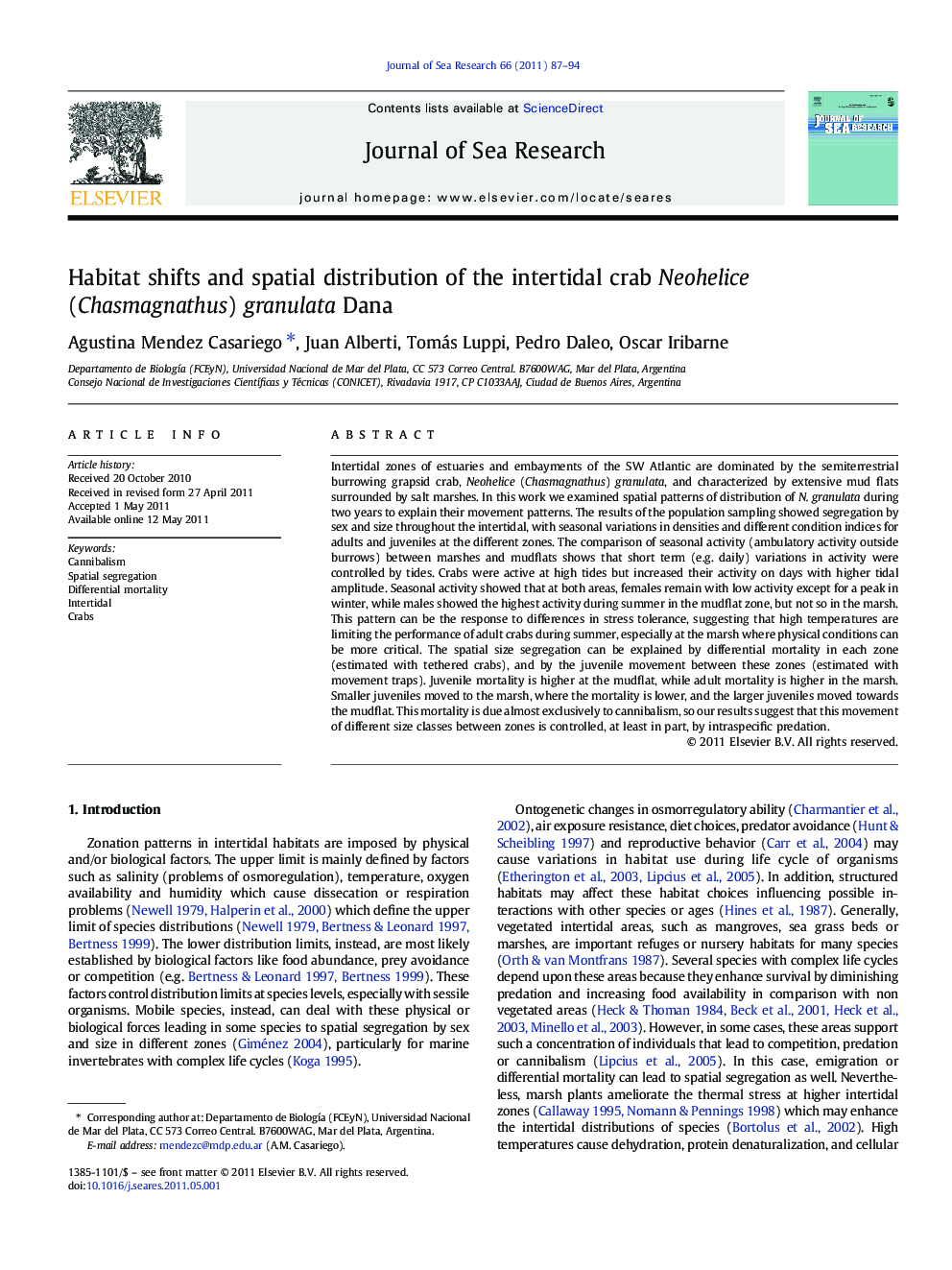| کد مقاله | کد نشریه | سال انتشار | مقاله انگلیسی | نسخه تمام متن |
|---|---|---|---|---|
| 4550008 | 1328123 | 2011 | 8 صفحه PDF | دانلود رایگان |

Intertidal zones of estuaries and embayments of the SW Atlantic are dominated by the semiterrestrial burrowing grapsid crab, Neohelice (Chasmagnathus) granulata, and characterized by extensive mud flats surrounded by salt marshes. In this work we examined spatial patterns of distribution of N. granulata during two years to explain their movement patterns. The results of the population sampling showed segregation by sex and size throughout the intertidal, with seasonal variations in densities and different condition indices for adults and juveniles at the different zones. The comparison of seasonal activity (ambulatory activity outside burrows) between marshes and mudflats shows that short term (e.g. daily) variations in activity were controlled by tides. Crabs were active at high tides but increased their activity on days with higher tidal amplitude. Seasonal activity showed that at both areas, females remain with low activity except for a peak in winter, while males showed the highest activity during summer in the mudflat zone, but not so in the marsh. This pattern can be the response to differences in stress tolerance, suggesting that high temperatures are limiting the performance of adult crabs during summer, especially at the marsh where physical conditions can be more critical. The spatial size segregation can be explained by differential mortality in each zone (estimated with tethered crabs), and by the juvenile movement between these zones (estimated with movement traps). Juvenile mortality is higher at the mudflat, while adult mortality is higher in the marsh. Smaller juveniles moved to the marsh, where the mortality is lower, and the larger juveniles moved towards the mudflat. This mortality is due almost exclusively to cannibalism, so our results suggest that this movement of different size classes between zones is controlled, at least in part, by intraspecific predation.
► N. granulata showed segregation by sex and size and seasonal variations in densities.
► Adults and juveniles showed different condition indices at different intertidal zones.
► Differential mortality and juvenile movements can explain the spatial segregation.
► Mortality is due almost exclusively to cannibalism.
► So, N. granulata distribution is partially controlled by intraspecific predation.
Journal: Journal of Sea Research - Volume 66, Issue 2, August 2011, Pages 87–94